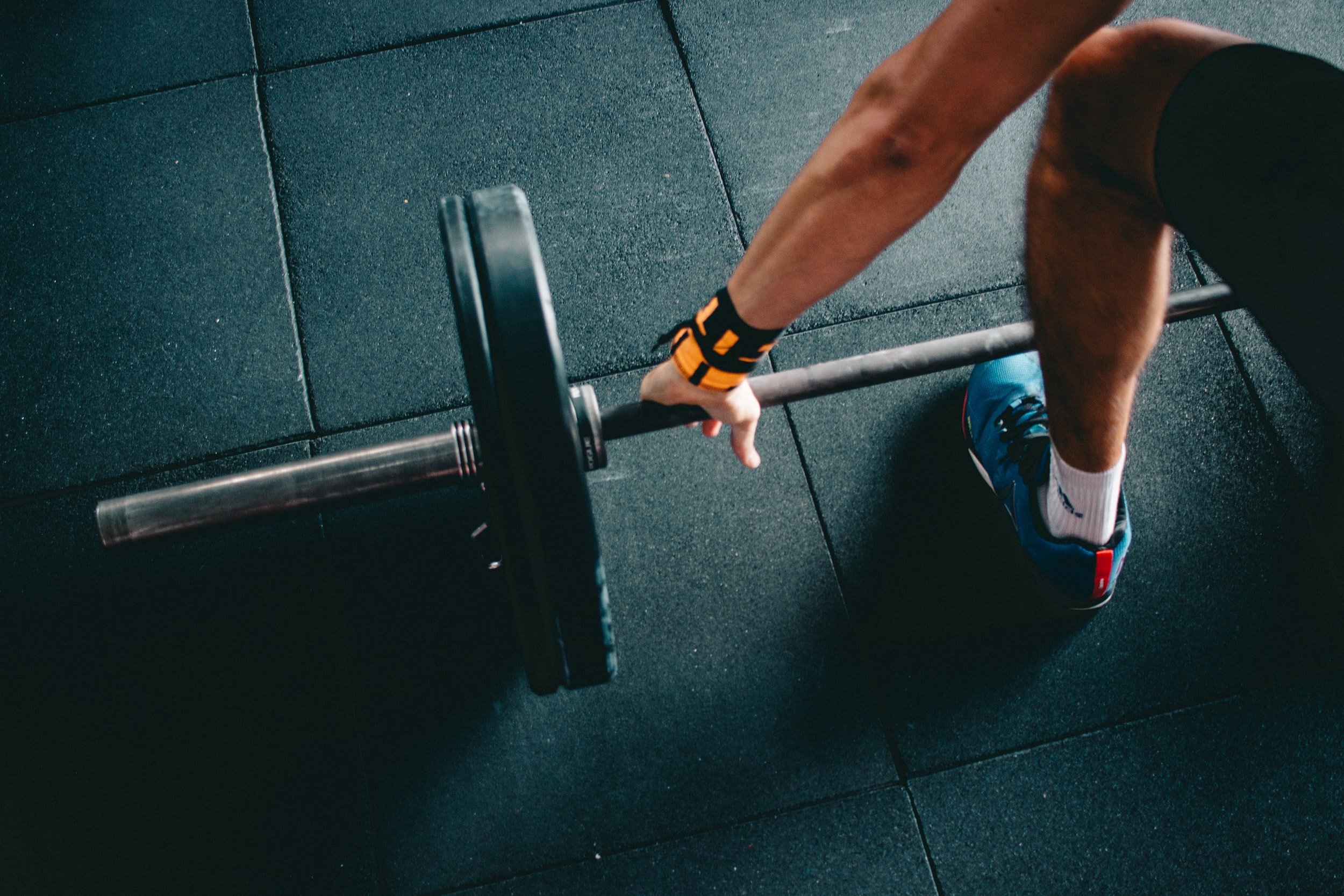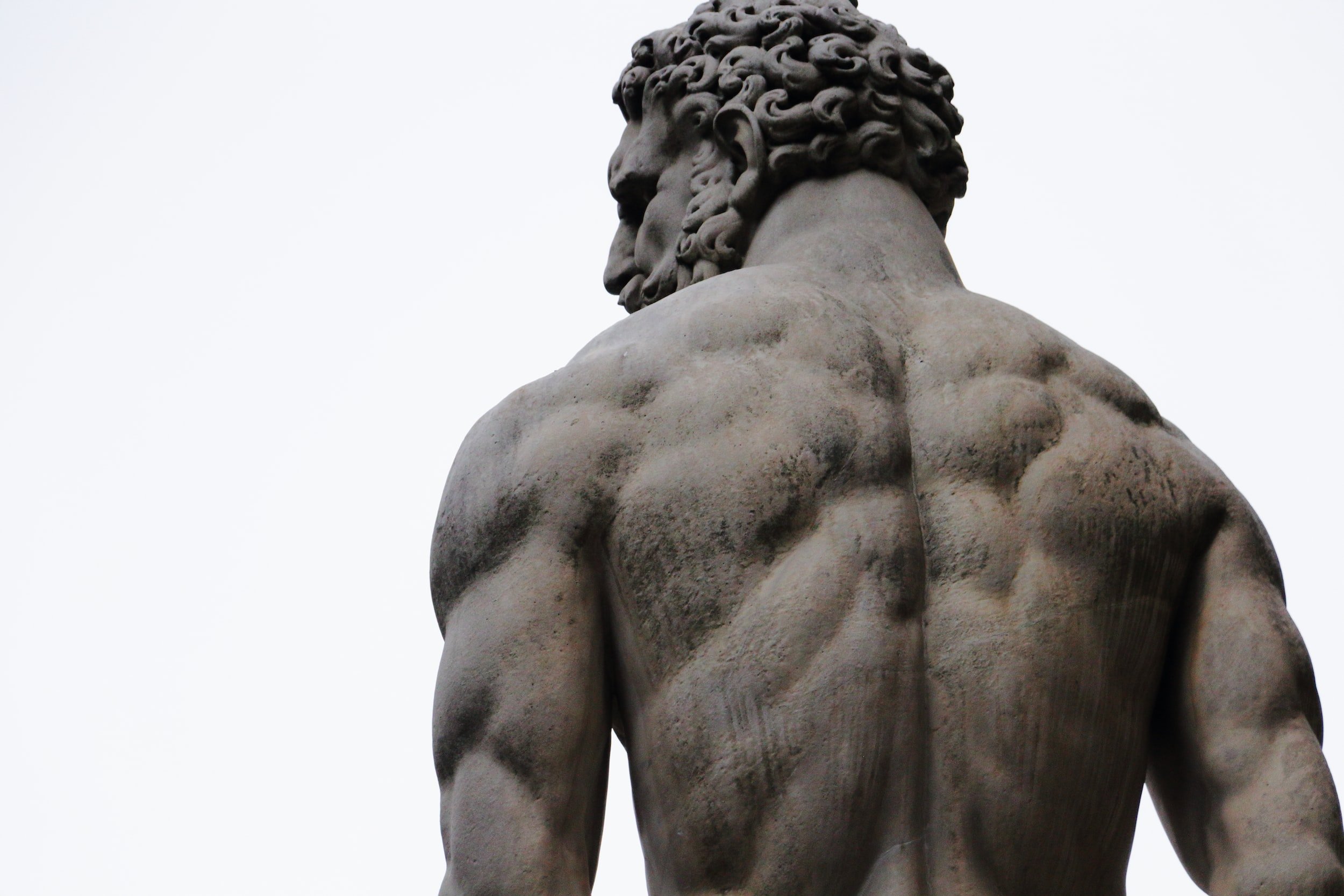Muscle Dysmorphia and Eating Disorders
Written by ‘Ai Pono Hawaii Staff Writer
Muscle dysmorphia (MD) is a body dysmorphic disorder that shares a number of similar features with eating disorders (ED).
Although it is not necessarily abnormal or unhealthy for an individual to take pride in their appearance, having an unhealthy and irrational obsession over one’s muscular form and appearance usually results in dissatisfaction and could negatively affect a person’s everyday life.
Muscle dysmorphia is somewhat related to the “Adonis complex”, a non-technical and umbrella term used to describe the anxiety and insecurity of men about how their body or appearance falls short of the epitome of a beautiful masculine body. However, muscle dysmorphia can occur in any individual , regardless of age or gender.
What Exactly is Muscle Dysmorphia?
In their study on steroid consumption, researchers Pope, Katz, and Hudson described a syndrome called “reverse anorexia” because of its common features with anorexia nervosa (AN), one of the most common types of ED. It was later renamed as “muscle dysmorphia”.
In the past decades, MD has also been referred to as "bigorexia." It is currently classified as a body dysmorphic disorder (BDD), which is categorized as an obsessive-compulsive disorder. Its main feature is an obsessive preoccupation with the shape and size of one’s muscles, which leads to significant distress or impairment in daily life. MD was included in the most recent edition of the Diagnostic and Statistical Manual of Mental Disorders (i.e., the DSM-5), and the reported average age of its onset is at around 19–20 years old.
Their obsession is centered on their body, degree of muscularity, and leanness. Meanwhile, their compulsion is on striving to build more muscles or become leaner. People suffering from MD usually exhibit repetitive behaviors like excessive grooming, skin picking, mirror checking, and reassurance seeking. Internally, they frequently have repetitive thoughts, such as comparing their physique with others and judging their body as smaller and less attractive than others.
MD is mainly characterized by the extreme pursuit of muscularity while keeping a low percentage of body fat. People with MD are consumed by the belief that they are not lean and muscular enough, in spite of the fact that they may have a normal or average physique, or may even be actually more muscular than average. They usually view their muscles as smaller than they truly are and view their body as weak and unattractive.
As a result, people struggling with MD become obsessed and constantly think about building muscles and getting leaner in order to make their muscles more noticeable. Because of this, many of them feel compelled to take steroids and other substances in order to quickly build their muscle mass. Alternatively, they may try extreme diets or other forms of body modification in order to achieve their goals.
Certain athletic activities, like gymnastics and wrestling, even seem to promote extreme weight and diet control. Unlike professional bodybuilders, however, people suffering from MD usually avoid showing their body in public because they feel ashamed of their physique.
Research has shown that although 10 percent of men and 28 percent of women go on a diet to lose weight, 17 percent of men and only 1 percent of women took steps to increase their weight and build muscles. MD is more commonly observed among men. It’s estimated that bigorexia currently affects hundreds of thousands of men from all over the globe. It’s even more common among those who take part in sports that value great muscle mass or power gain, like bodybuilding and weightlifting.
However, symptoms of MD have been observed in both men and women. Researchers believe that MD is under-diagnosed because our modern society encourages muscularity and leanness through diet culture and the promotion of excessive exercise as reflecting one’s commitment, willpower, or overall strength as a person.
Causes of Muscle Dysmorphia
Experts say that the onset of MD may be triggered by outside factors like the media (such as fitness-themed influencers and pages) and competitive sports.
In our modern world, people are burdened with the pressure to attain a muscular and lean physique. The “ideal” body type is now more emphasized and exposed using various media and platforms, and studies have shown that this has a detrimental effect on individuals self-esteem and level of body satisfaction.
Moreover, this unhappiness can lead to certain unhealthy behaviors, including extreme exercising and dieting. The emphasis on having big muscles is also, by a large part, driven by traditional gender stereotypes.
Diagnostic Criteria for Muscle Dysmorphia
According to the DSM-5, the official diagnostic criteria for MD include these:
Preoccupation with the thought that one's body is not sufficiently lean or muscular (the person may spend many hours at the gym or diet excessively)
The person must display at least two out of these four:
Neglecting social, occupational, and recreational activities in order to compulsively maintain a workout schedule and diet routine
Avoiding exposure of one’s body, possibly triggering anxiety or distress when the person is put in a situation in which they feel exposed
Preoccupation with his or her body size that leads to significant distress in other aspects of his or her life
Continuing workouts, dieting, and use of substances even if one understands the risks or consequences of doing so
The person's main preoccupation is with feeling too inadequate or small (on the other hand, people with anorexia are primarily preoccupied with gaining weight)
Signs and Symptoms of Muscle Dysmorphia
Reverse anorexia may seem challenging to spot in people suffering from it, particularly if they’ve always been athletic or interested in bodybuilding.
Some red flags that you or a person you know is suffering from bigorexia include the following:
obsession with the notion that one’s physique is not lean or muscular enough
performing intense workout regimes (this usually includes extreme weightlifting sessions) and spending long hours at the gym, and feeling driven to repeat this grueling process the following day
neglecting sensible parts of a training regimen (like strength or functional fitness) to focus just on muscular hypertrophy, particularly on growing the "show" muscles (e.g., biceps and chest)
experiencing extreme anxiety when workouts are missed
continuing to work out despite suffering from injuries
persistently adhering to weight loss and muscle-building diets without a clear endpoint or goal in sight
engaging in excessive dieting, which may involve avoidance of situations where they have to eat out (because of their desire for strict control over how their food was prepared)
frequently missing work commitments and/or canceling social engagements just to be able to stick to their strict exercise and diet regimen
constantly seeking reassurance from others about their physique
disliking one’s body and believing that one’s flaws are very obvious to other people who look at them
overusing or abusing anabolic steroids and other supplements that may be considered as risky, including those that promote rapid fat loss
wearing clothes that are very tight or baggy, even in a hot climate
constantly examining themselves in mirrors or avoiding mirrors altogether
deliberately avoiding instances where they have to remove their clothes in the presence of other people
If a person who’s struggling with muscle dysmorphia does not seek proper and timely treatment, the disorder can lead to:
depression
steroid misuse
self-harm
suicidal thoughts
and even death
Other symptoms that are linked with MD include the following:
neuroticism and perfectionism
higher rates of anxiety and mood disorders
risk of interpersonal sensitivity and obsessive–compulsive symptoms
lower self-perception and self-esteem
greater feelings of loneliness
decreased social and occupational functioning
poor quality of life
Similarities Between Muscle Dysmorphia and Eating Disorders
Although MD is currently classified as an obsessive-compulsive disorder, there is ongoing debate among experts regarding its classification due to its shared features with feeding and eating disorders. In fact, some researchers have pointed out that MD shares similarities with anorexia and bulimia nervosa—two of the most common EDs—in that MD also typically emerges during the teenage years and may also stem from internalized societal pressures to conform to particular body ideals. Typically, this refers to the pressure to have a large, muscular body (including broad shoulders) for men, and to be slim and toned for women.
A meta-analysis has also shown a positive and statistically significant association between MD and ED symptoms. This means that higher levels of MD were linked to higher levels of ED symptoms: therefore, a person with bigorexia is more likely than a person without bigorexia to also suffer from an eating disorder. A study involving over 5,000 men and over 5,000 women between the ages 18 to 72 also discovered that MD psychopathology and binge eating are strongly associated.
In addition, some researchers highlighted similarities between the clinical characteristics of MD and ED. For instance, both conditions are primarily marked by high levels of dissatisfaction with one’s body, as well as irrational beliefs about one’s physique: people with MD typically feel that their body is not muscular or lean enough, and people with ED’s may also obsess over their body shape or size also.
MD has even more pronounced similarities with anorexia. Researchers claim that AN and MD are on opposite poles of a continuum, where AN stands for the pathological obsession over the ‘ideal’ slender body, and MD stands for the pathological obsession over the ‘ideal’ muscular body.
Another shared characteristic of muscle dysmorphia and eating disorders is that extreme exercise regimes and dieting are often seen in people with either of these two disorders. Binge eating is seen in many patients who suffer from an eating disorder; it is, in fact, a key feature of bulimia nervosa and binge eating disorder, and may also be seen in anorexia—binge eating/purging type. At the same time, people with MD may also perform binge eating in the form of deliberate, periodic overeating that’s directed toward developing their muscle mass (often called "bulking").
A number of studies also demonstrated that MD and ED have common psychological features. For instance, research has shown that the traits neuroticism and perfectionism are strong predictors of both the obsession for a muscular body among men and the obsession for a slim figure among women.
In a recent study, researchers found that components of a transdiagnostic model of ED (which include mood intolerance, low self-esteem, and perfectionism) strongly predicted MD symptoms among students. Some researchers believe that dissatisfaction with one’s body and low self-esteem cause the development of symptoms for both MD and ED, in both males and females.
A study that compared a group of bodybuilders and a group of women with anorexia found that both groups have higher obsession, perfectionist tendencies, and narcissism compared to the general population. Both groups also demonstrated higher levels of physical anhedonia (i.e., the inability to experience pleasures related to touch, such as eating, touching, and sex) compared to the general population. Their data showed that the two groups are statistically alike on all variables except in their self-esteem and body self-esteem, both of which were higher in the group of bodybuilders.
Men with MD exhibited greater levels of grandiose fantasy compared to women with ED, which could explain the former's higher self-esteem compared to the latter. Fantasies of being successful and admired can lead to them having better self-esteem. Researchers have pointed out that another possible explanation is that men who spend a lot of energy and time in building muscles and are rewarded by their environment may be gaining boosts in their self-esteem.
In addition, restrained eating behaviors (like calorie counting) have been noted in both men and women who have MD as well as those who have ED: with the goal of thinness in women, and the goal of muscularity in men.
Researchers have suggested that the symptoms and behaviors that characterize MD often co-occur with ED symptoms in both males and females. They recommended that clinicians who examine people with MD symptoms should consider the possibility that the patient also suffers from ED, and vice versa (especially in male patients). For example, a patient with anorexia who begins increasing his or her weight might actually be masking disordered eating behaviors that are targeted toward increasing his or her muscularity.
Having a distorted view of one’s body is another feature that’s seen in both patients with MD and patients with an ED. Low self-esteem is likewise a common feature in both conditions. Patients suffering from either MD and ED may both also frequently look at their body in reflective surfaces, or hide their body from the public in one way or another.
Lastly, people who suffer from either MD or ED typically have extremely negative views of their body, and this often comes with feelings of embarrassment, disgust, and shame—all of which can lead to unhealthy and destructive behaviors.
Differences Between Muscle Dysmorphia and Eating Disorders
MD was originally classified into the eating disorder spectrum before being labeled as a type of BDD. Even though many researchers have recognized that MD is similar to EDs in several ways, some have pointed out that people who struggle with MD tend to meet their goal (bigger muscles) mostly using exercise (instead of diet). In MD, diet is less valued, which is one of the major differences between MD and EDs.
Another key difference between MD and EDs is that people with bigorexia are driven to achieve and maintain leanness, which means having a low body fat percentage and high muscle visibility. On the other hand, most EDs focus on the desire for thinness, which usually means having a low body weight.
Last but not the least, most studies on muscle dysmorphia examined male participants in the United States, while most studies on eating disorders had predominantly female participants. (It’s important to note, however, that although most studies on MD have focused on men, the condition itself is seldom discussed among young men. Mental disorders still carry a stigma—although far less compared to decades ago—and there's an additional stigma when such a disorder is seen in a man.)
Final Words on Muscle Dysmorphia and Eating Disorders
Some researchers believe that it’s premature to categorize MD as a body dysmorphic disorder, particularly those whose studies found striking similarities between MD and ED.
Most experts recommend waiting for more studies to be done in this subject before MD is given a final classification: whether a BDD, ED, both, or something else. The majority of published research exploring this topic has relied on cross-sectional designs, which prevent causal inferences on the association between MD and ED. Thus, experts recommend that future research use a longitudinal design.
Regardless of what type of disorder it is, it’s important for anyone who suffers from symptoms of MD to seek treatment as soon as possible. By doing so, there will be a greater likelihood of recovery because disordered behaviors would have less time to develop into entrenched habits.
Get Holistic Treatment for Muscle Dysmorphia and Eating Disorders
Located on the tranquil island of Maui, ’Ai Pono Hawaii is a trusted eating disorder recovery center that has over 35 years of track record in treating muscle dysmorphia and eating disorders.
We offer a truly comprehensive and holistic treatment program that’s personalized for each patient. Our well trained and caring staff have extensive experience in treating patients from various backgrounds who are suffering from muscle dysmorphia and all types of eating disorders. ‘Ai Pono provides residential treatment for women and offer a Virtual Intensive Outpatient Program for individuals of all gender identities who reside within the State of Hawaii.
Our treatment plan for MD usually incorporates a popular form of psychotherapy called cognitive-behavioral therapy (CBT), which uses cognitive restructuring and ritual prevention exercises (in the form of assignments) to help patients holistically heal themselves instead of hyperfocusing on their body.
When needed, our therapists may also prescribe psychotropic medications as a complement to therapy. Selective-serotonin reuptake inhibitor (SSRI) antidepressants like fluoxetine have shown to be effective in treating MD. Finally, since bigorexia shares many common features with eating disorders, patients’ meals and any use of drugs and supplements are usually addressed in their treatment program.





